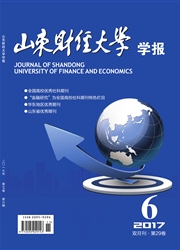

 中文摘要:
中文摘要:
文章基于两级低碳供应链视角,针对制造商主导情景,建立了碳补贴生产企业政策优化决策博弈模型,得到了均衡解,分析了供应链成员企业定价和减排优化策略,采用罗宾斯坦议价模型求得供应链协调均衡解;与碳补贴消费者政策进行比较,发现两种政策各有所长,没有绝对优劣之分,仅可以相互部分替代;基于总量控制和目标减排导向,给出了政府补贴消费者政策和补贴生产企业政策最优选择的边界条件,但政府两种政策都不能同时实现总量控制和目标减排。在此基础上,提出了相应的政策建议。
 英文摘要:
英文摘要:
From the perspective of two-level low carbon supply chain and aimed at the manufacturer-dominating scenario, this paper establishes a carbon subsidy enterprise policy optimization game model, obtains the equilibrium solution, analyzes supply chain member pricing and emission reduction optimization strategies, gets supply chain co- ordination equilibrium solution by adopting Rubinstein bargaining model, and makes a comparison with carbon subsi- dy consumer policy. The results show that the two different policies have their own good points without absolute ad- vantage and can replace each other only partially. Based on total amount control and target emission reduction orien- tation, the boundary conditions are provided for the optimal selection of government subsidy consumer policy and government subsidy enterprise policy, but neither of the two policies can achieve total control and target emission re- duction. On such a basis, the corresponding policy recommendations are put forward.
 同期刊论文项目
同期刊论文项目
 同项目期刊论文
同项目期刊论文
 期刊信息
期刊信息
